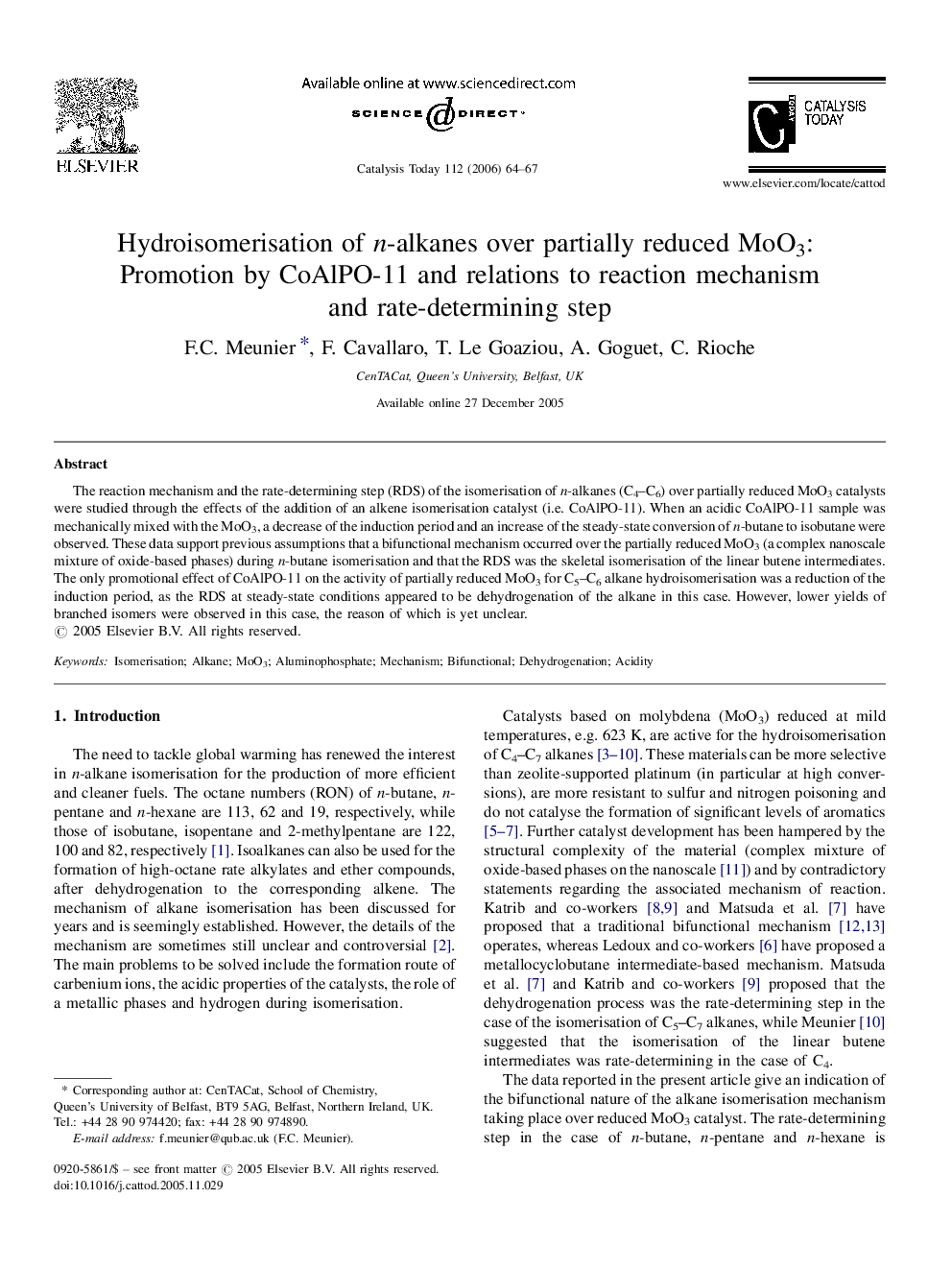| Article ID | Journal | Published Year | Pages | File Type |
|---|---|---|---|---|
| 58800 | Catalysis Today | 2006 | 4 Pages |
The reaction mechanism and the rate-determining step (RDS) of the isomerisation of n-alkanes (C4–C6) over partially reduced MoO3 catalysts were studied through the effects of the addition of an alkene isomerisation catalyst (i.e. CoAlPO-11). When an acidic CoAlPO-11 sample was mechanically mixed with the MoO3, a decrease of the induction period and an increase of the steady-state conversion of n-butane to isobutane were observed. These data support previous assumptions that a bifunctional mechanism occurred over the partially reduced MoO3 (a complex nanoscale mixture of oxide-based phases) during n-butane isomerisation and that the RDS was the skeletal isomerisation of the linear butene intermediates. The only promotional effect of CoAlPO-11 on the activity of partially reduced MoO3 for C5–C6 alkane hydroisomerisation was a reduction of the induction period, as the RDS at steady-state conditions appeared to be dehydrogenation of the alkane in this case. However, lower yields of branched isomers were observed in this case, the reason of which is yet unclear.
